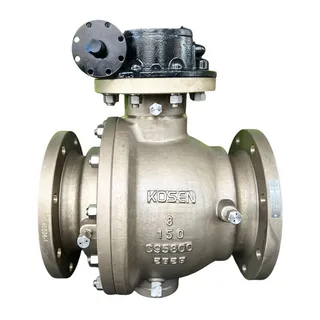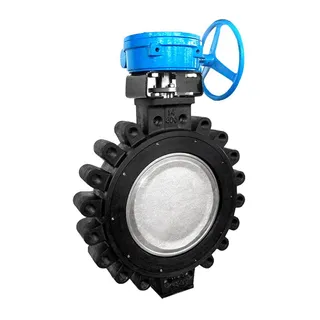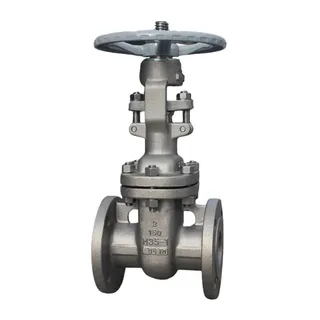In industrial production, valves play a crucial role. They not only control the flow of fluids but also ensure the safety and efficiency of systems. However, faced with numerous types of valves and complex operating conditions, how can one choose the right valve? This article will deeply explore the performance characteristics of valves and the key factors to consider during selection, helping you make informed decisions.
As key components in industrial systems, the performance of valves directly affects the safety and efficiency of the entire system. From strength performance, which ensures the valve can withstand pressure, to sealing performance that prevents leakage, flow resistance that reduces energy consumption, as well as opening and closing performance, opening and closing speed, functional sensitivity, and service life, every performance indicator is crucial. Only by fully understanding these performances can a solid foundation be laid for reasonable valve selection.
The strength performance of a valve refers to its ability to withstand the pressure of the medium. As mechanical products that bear internal pressure, valves must have sufficient strength and rigidity to ensure they do not rupture or deform during long-term use. Valves with insufficient strength are prone to cracking under high-pressure conditions, which not only causes fluid leakage but may also lead to serious safety accidents. Therefore, during the design and manufacturing of valves, strength tests must be conducted strictly according to relevant standards to ensure the valve can withstand the design pressure.
Sealing performance is one of the most important technical indicators of valves. The main sealing parts of a valve include three areas: the contact surface between the closure and the valve seat, the interface between the packing and the valve stem and stuffing box, and the connection between the valve body and the bonnet. Leakage at the first point is called internal leakage, which affects the valve's ability to shut off the medium. Leakage at the latter two points is called external leakage, which may lead to material loss, environmental pollution, or even accidents. For flammable, explosive, toxic, or radioactive media, external leakage is absolutely unacceptable. Therefore, valves must possess reliable sealing performance.
When a medium flows through a valve, it causes pressure loss, that is, the pressure difference before and after the valve. This pressure loss indicates that the valve provides a certain resistance to the medium, which requires the medium to consume energy to overcome this resistance. From an energy-saving perspective, valve design and manufacturing should minimize the resistance to the flowing medium. Valves with low flow resistance not only reduce energy consumption but also improve overall system efficiency.
The opening and closing force and torque refer to the force or torque that must be applied when opening or closing a valve. When closing a valve, it is necessary to form a certain sealing contact pressure between the closure and the valve seat, while also overcoming the friction between the valve stem and packing, the threads between the valve stem and nut, the support at the end of the valve stem, and other friction points. Therefore, a certain closing force and torque must be applied. During valve operation, the required opening and closing force and torque vary, with the maximum usually appearing at the final instant of closing or the initial instant of opening. In valve design and manufacturing, efforts should be made to reduce the opening and closing force and torque to lessen the labor intensity for operators.
Opening and closing speed refers to the time required for a valve to complete one opening or closing operation. Generally, there is no strict requirement for valve opening and closing speed, but in certain special conditions, it becomes particularly important. For example, some scenarios require rapid opening or closing to prevent accidents, while others require slow closing to avoid water hammer. Therefore, when selecting a valve, the opening and closing speed should be considered according to the specific operating conditions.
For throttling valves, pressure-reducing valves, control valves, and safety or steam trap valves with specific functions, functional sensitivity and reliability are very important technical indicators. These valves need to respond quickly and accurately to changes in medium parameters to ensure normal system operation.
Service life is an important indicator of valve durability and has significant economic implications. It is usually expressed by the number of opening and closing cycles that ensure sealing requirements, or it can be expressed by operating time. Valves with longer service life not only reduce replacement frequency but also lower maintenance costs and improve overall system economic benefits.
After understanding the basic performance of valves, the next step is the key process of valve selection. Improper selection not only may result in valves failing to meet operating requirements but can also create safety hazards and increase maintenance costs. Therefore, multiple factors must be comprehensively considered during selection to ensure the chosen valve perfectly matches the actual application.
Ordinary Gate, Ball, and Globe Valves: Ordinary gate, ball, and globe valves are structurally not allowed for throttling, yet in practical process design, they are often used for regulation. Improper use can cause sealing elements to remain in throttling state for long periods, where impurities in oil may erode sealing elements and damage sealing surfaces, resulting in poor shut-off. To avoid this, the appropriate valve type should be selected based on actual usage.
Special Media Valves: When the medium is oxygen, ammonia, or other special media, the corresponding oxygen-specific valve or ammonia valve should be used. These specialized valves are designed to meet the requirements of specific media, ensuring safe system operation.
Bidirectional Pipeline Valves: Directional valves are unsuitable for bidirectional pipelines; non-directional valves should be used. For example, after stopping heavy oil pipelines in refineries, steam is used to blow the pipeline in reverse to prevent solidification and blockage. In such cases, globe valves are unsuitable because reverse flow may erode the sealing surface. Gate valves are more suitable.
Valves for Media with Crystallization or Sediment: For media that crystallize or contain sediment, globe and gate valves are not recommended because their sealing surfaces are easily worn. In such cases, ball valves or plug valves should be used as their sealing surfaces are less prone to wear. Flat gate valves can also be selected, preferably jacketed types.
Valves for Corrosive Media: For corrosive media under low temperature and pressure, non-metallic valves should be used as much as possible. Non-metallic valves have excellent corrosion resistance and can effectively prevent corrosion by the medium. For high temperature and pressure, lined valves can be used to save precious metals. Economic feasibility should also be considered when selecting non-metallic valves.
Valves for High-Viscosity Media: Valves with low flow resistance, such as straight-through globe, gate, ball, or plug valves, should be used. Low flow resistance reduces energy consumption and improves system efficiency.
Valves for High-Temperature and High-Pressure Media: High-temperature and high-pressure media commonly use cast chromium-molybdenum steel or chromium-molybdenum-vanadium steel. For ultra-high temperature and high-pressure media, corresponding castings should be considered. Forgings have superior overall performance compared to castings and better temperature and pressure resistance. Therefore, forged valves should be prioritized in high-temperature and high-pressure conditions.
Valves for Special Conditions: If steam is stopped in outdoor pipelines, condensate may freeze and damage valves. In cold regions, valves should use cast steel, low-temperature steel, or have effective insulation. For extremely toxic or hazardous media, bellows-structured valves should be used to prevent leakage through packing.
Improper valve installation can also cause issues. For example, if the medium contains impurities, not installing a filter or strainer upstream allows impurities to enter the valve, damaging the sealing surface or settling at the valve bottom, resulting in poor shut-off and leakage. Therefore, the installation position should be selected based on the nature of the medium and operational conditions, with filters or strainers installed when necessary.
In gate valve selection, rising stem single-gate and non-rising stem double-gate valves are better for corrosive media; single-gate valves are suitable for high-viscosity media; wedge double-gate valves better adapt to high temperatures and sealing surface deformation than wedge single-gate valves and avoid jamming due to temperature changes, making them superior to rigid single-gate valves. Valve selection should match the specific medium and operating conditions.
Large-Diameter and Special-Condition Valves: For large-diameter valves and valves in long-distance, high-altitude, high-temperature, and high-pressure applications, electric and pneumatic valves should be selected. Explosion-proof devices are required in flammable and explosive environments. For safety and reliability, hydraulic and pneumatic devices are used.
Fast-Acting Valves: For valves requiring fast opening and closing, butterfly, ball, plug, or quick-acting gate valves should be used. Ordinary gate and globe valves are not suitable.
Valves in Limited Operating Spaces: Rising stem gate valves are not suitable; non-rising stem gate valves or butterfly valves are preferable.
Flow Regulation Valves: Control valves should be used for precise flow regulation; needle or throttling valves for small flow accuracy; pressure-reducing valves to lower downstream pressure; pressure-stabilizing valves to maintain stable downstream pressure.
Food and Bioprocess Valves: In food and bioprocess production, valve selection must consider the cleanliness of the medium. Ordinary gate and globe valves cannot meet cleanliness requirements. From a cleanability perspective, no valve matches diaphragm valves. Therefore, diaphragm valves should be prioritized in food and bioprocess applications.
Valve performance and selection are key factors to ensure safe and efficient industrial system operation. When selecting valves, comprehensive consideration should be given to strength, sealing, flow resistance, opening/closing performance, opening/closing speed, functional sensitivity, and service life. Meanwhile, valve type, material, and installation method should match the medium characteristics, operating conditions, and installation location. Only in this way can valves achieve optimal performance in practice and ensure system stability.
It is hoped that this article helps you better understand valve performance and key selection points. In practice, it is recommended to consult professional valve manufacturers or engineers for more accurate selection advice.



